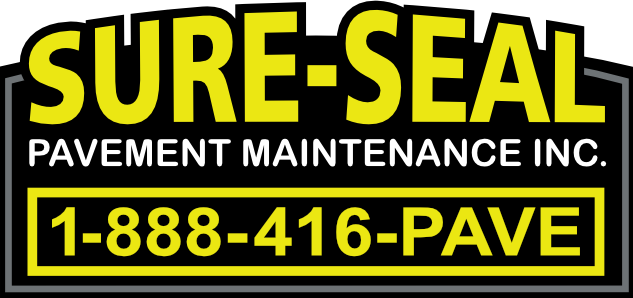
Traffic calming measures have seen a lot of growth and improvement over the past decade or so, especially in residential areas, school zones, and commercial parking lots. Any area or stretch of road with heavy foot traffic requires advanced safety measures that can help reduce the likelihood of fatal or non-fatal accidents. Speed bumps and speed humps are a simple, cost-effective, and environmentally-friendly solution to reducing noise pollution, regulating speed, and improving the overall safety of pedestrians and other drivers on the road. With the proper pavement maintenance services, these devices can be easily installed and preserved for many years.
Many people don’t know the difference between a speed bump and a speed hump. When properly installed and utilized, these traffic calming devices can enhance safety in otherwise dangerous areas and most importantly, save lives.
What’s the Difference Between Speed Bumps and Speed Humps?
The main differences between speed bumps and speed humps have to do with where they’re placed, their height and length, the materials they’re made of, and the installation process.
Speed Bumps
Speed bumps are more commonly used in parking lots and driveways that are shared equally by both vehicles and pedestrians. The idea is to slow down traffic enough so that pedestrians and drivers have enough time to react to one another. Speed bumps are typically more rounded and higher up off the surface of the ground, forcing drivers to slow down or risk damaging the bottom of their vehicles. This design is done on purpose so that drivers have a greater incentive to slow down in heavily populated areas.
Speed Humps
Speed humps, on the other hand, are generally more modular in design, which means they can be taken apart or removed from the surface of the road as needed for repairs or redesign and then reinstalled. They also cover the entire width of the road from one curve edge to another. Speed humps are typically installed on residential roads that have lower speed limits but still have a steady flow of pedestrian and vehicular traffic. The idea is to reduce speed, control the flow of traffic, and diminish noise pollution in quiet neighbourhoods. Since speed humps are much lower to the ground than their taller counterparts, they have a lesser impact on vehicles and a much smoother jolt.
Similarities Shared by Speed Bumps and Speed Humps
Speed bumps and speed humps are both designed to create a small, but noticeable jolt every time vehicles drive over them. Over time, these jolts subconsciously encourage drivers to change their driving habits and pay greater attention while driving through areas that have more pedestrians, especially young children.
Street signs are only minimally effective in this regard because they can easily be missed or oftentimes disregarded by careless drivers. A physical obstruction in the road like speed bumps or speed humps, however, is a lot harder to ignore, especially since they span the entire width of the road.
Additionally, speed bumps and speed humps are typically constructed of the same materials. Asphalt, rubber, metal, plastic, or concrete materials are typically used depending on the application and the environment in which these safety measures are being installed.
Of course, asphalt and rubber are increasingly becoming the most common materials used to make speed bumps and speed humps. They’re more malleable, adaptable, and have a much lower environmental impact than the abovementioned materials.
Recycled plastics are also a great choice, though, because they’re highly durable, can withstand extreme temperatures and vehicular impact, and repurposing the plastic saves it from ending up in landfills.
Due to technological and practical advancements, installing traffic management tools like speed bumps and speed humps has never been easier. Whether they’re being installed by municipal contractors or private pavement maintenance companies in the GTA, they can usually be installed by a single worker in a matter of hours.
Why Speed Bumps and Speed Humps Are Both Effective Traffic Calming Measures
Most fatal or non-fatal car accidents, collisions, and pedestrian accidents can be chocked up to one thing: speeding. Combined with reckless driving and poor driving conditions, this leads to more and more car accidents in Toronto and the GTA every year.
The worst part is that most motorists don’t adjust their driving habits according to road and weather conditions. Even in the midst of a major snow storm, icy road conditions, and poor visibility, people still tend to speed. Oftentimes, they don’t get caught and that makes them feel invincible.
Installing speed bumps and speed humps in the appropriate areas physically helps diminish speeding in high risk areas by literally forcing drivers to slow down or else risk damaging their vehicles. These devices save numerous lives every year because they force drivers to pay more attention to their surroundings and make sure that they’re adhering closely to the rules of the road.
Speed Hump and Speed Bump Installation Services for Better Traffic Management in the GTA
As one of the leading commercial asphalt pavement maintenance services in Toronto and the GTA, Sure-Seal Pavement Maintenance Inc. can help make sure that your parking lot and driveway is kept safe all year-round. We recommend installing asphalt speed bumps in commercial parking lots because they help reduce speed, increase safety, and virtually eliminate your liability in the event that an accident does occur on your property. To learn more about our professional asphalt services or to book a free consultation, please contact us!

![Sureseal Pavement [Staging] -](https://www.suresealpavement.com/wp-content/uploads/2024/12/1-300x141.png)